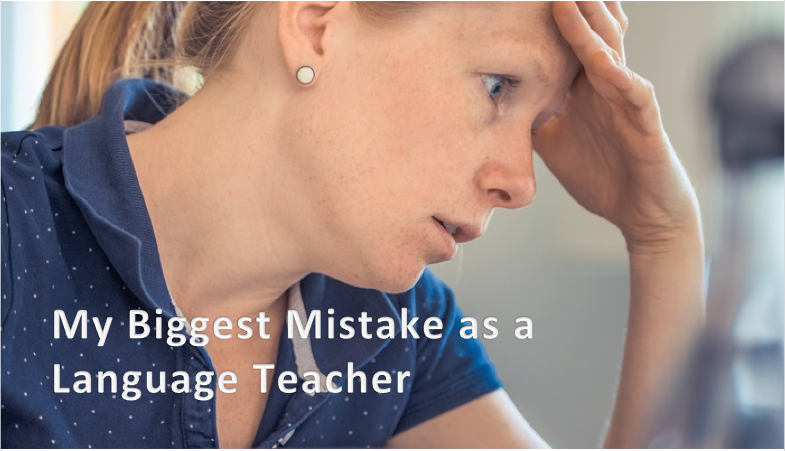Lesson Threads: The Craft of Planning a Language Lesson

Teaching as a “Science”
As a younger teacher I used to think of the classroom as a laboratory – a place where I could test activities on students and, depending on the outcomes, label them and catalogue them, refine them and retest them, or discard them as failed experiments. As an inexperienced teacher, I was concerned with finding my “style” and adding volume to my bag of tricks. However, after many errors in judgement, I have come to realize that thinking of the classroom as a laboratory for activity experimentation has flaws. While it is true that we all need to find an approach that works for us, I have come to realise that the classroom should not be thought of as a personal teaching lab for two reasons:
- It implies that learners are lab rats; and
- It would require the classroom to be a controlled environment, which, in my experience, is not the case.
There are many more variables than constants surrounding the groups we work with foreign language lessons ought to be communicative, democratic and dynamic.
Group Dynamics
As we use activity ideas to help us attain our learning objectives, we all know that some of them usually work, some of them sometimes work and some of them only work with some groups. One activity may work well for one teacher but not for another. We must be mindful of the fact that even if an activity is appropriate for a group in terms of level, theme and target language, a lot also depends on our own teaching style and personality, the way we set it up, on the trust we have established within the group and on the mood or personality of group itself.
A group can be greater or less than the sum of its parts. Occasionally we come across groups that, despite being full of dynamic individuals, seem to lack the collective energy or cohesion they need to be engaged in the communicative activities we bring to the lesson. Other groups might surprise us with the enthusiasm they put into their learning. Each group has its own personality and that group personality often seems to be a reflection of the positive, negative or indifferent attitudes of individuals within the group. Whether group members are conscious of it or not, there are leaders within each group whose enthusiasm or apprehension have an impact on other group members and, therefore, on the results of our hard work and planning.
Teaching as an Art
I now tend to think of teaching as an art or craft rather than as a science. Everyone has their own idea of what art should be in the same the way that every learner has his or her own idea of what a lesson should be. The teacher’s craft is in the way learning is set up and framed; the studio is the classroom; and the work of art is what each group member takes away with them. But we mustn’t be confused – although teachers need to be artistically inclined in order to know which supplies and materials (activities) will be needed to set up and frame the learning, it’s not always, nor should it be, the teacher who is holding the palette in the studio. And the learners are not an audience in a gallery – they are part of the creative process.
The Craft of Lesson Planning
A well-crafted language lesson has two threads running continuously through its fabric. Ideally, the language focus (often grammar or vocabulary) should be intertwined with the theme (the application of the language) of the lesson. These threads tie activities together to weave a seamless arrangement of communicative and task-based learning material. The ability to put this kind of craftsmanship into activity design and lesson planning is what makes great teachers.
So, if the language focus thread should be intertwined with the theme thread, and that both threads should be present from the time we greet the learners as they walk in through the door until we say, “See you next time”, then this means that the best warm up activities have a dual function – they help to focus everyone’s attention and establish an energy level, and they serve to introduce the grammar and theme at the same time.
In a perfect world, the warm-up helps set up another activity to come that delves more deeply into the theme, its vocabulary, and the language focus. This may lead into another activity to reinforce, expand upon or revise the one before, and so on. Finally, the lesson needs summary and revision. The activity we choose to achieve this should tie in with all those that have gone before it and provide us with closure.
Challenges in Crafting the Perfect Lesson Plan
It may seem hard to argue against the principle that lessons should be seamless – continuity and flow are logically characteristics of a well-crafted lesson. However, experienced teachers know that the ‘perfect world’ very, very elusive in reality.
There are several real-world factors that make the ‘ideal’ lesson plan difficult to pull off.
Firstly, the lesson’s seamless flow often has to be disrupted by essential, non-theme or non-language-focus-related tasks that the group needs to address. There could be homework to check, quizzes to write, announcements to make, vocabulary to revise or new grammar to teach.
Secondly, the flow is often interrupted by ‘off-topic’ questions from learners that need to be addressed.
And, thirdly, it can be really time-consuming and very difficult finding, adapting or creating several activities that flow together and focus on the same theme and language focus for a given curriculum point. Who’s got the time?
Nevertheless, with the knowledge that planned and unplanned disruptions are unavoidable, we should always do our best to focus on continuity and to make our lessons engaging for the learner. The bright side is that we accumulate lessons and activity ideas as we teach and, as a result, future lessons aren’t so tough to plan well, i.e. we build up a ‘repertoire’ of activities we can draw on. Moreover, we can take heart in the fact that, the more we research and create activities in our teaching and come to understand their dynamics, the easier it becomes for us to adapt or create something new when we need it down the road. Creativity in teaching begets creativity in teaching.
And this brings us to another issue – where do we store all of the fantastic ideas we have accumulated? Well, that’s a question for another day…
Please feel free to comment or share if you think this is useful!




